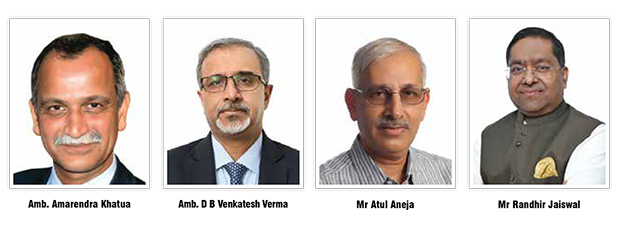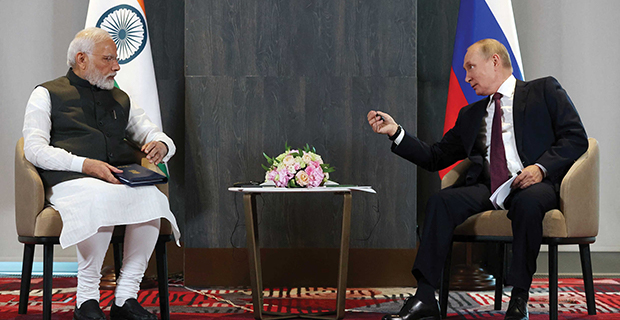TIME TESTED PARTNERSHIP

As former Secretary (West) in the MEA Amarendra Khatua explains, in today’s world foreign policy is “basically strategic interest of the country and strategic interest of the ruling government of that country”. India is always conscious of its right to decision making while keeping an eye on the future. The next five years are going to be crucial, he says.
A bilateral visit comes with many meanings, one for the host country and the other for the international community. Ambassador D B Venkatesh Verma says the underlying message to the world of Modi’s visit was that the relationship between India and Russia is “not just legacy handouts”.
Earlier India used to depend solely on Russia for military equipment but now it has diversified. India buys military arms and equipment from the US also. Verma believes the PM’s visit “signalled India’s entry into the big league of global geopolitics.” But, he also believes that instead of always looking at China, Moscow can seal a few more new bilateral mega projects to have a lasting effect on the strategic partnership.
Although Russia has mostly remained equidistant on issues relating to India and China, India has never forgotten Russia’s contributions. Russia has always stood by India, whether it was during the 1971 war or supplying military equipment, weapons or food and fertilizer. In fact, purchasing Russian oil at a discounted price has not only benefited India’s economy but the world. India’s demand for Russian oil at a cheaper rate not only helped India but stabilised oil prices globally. The “steadiest” bilateral relations in the world between India and Russia has now expanded beyond the traditional areas of military, nuclear and space cooperation to future aspirational domains.
If we look at bilateral trade, it has far exceeded the target of $30 billion set earlier for 2025. It has already touched the $65 billion mark, although the bulk may be India’s import of Russia’s petroleum products. Now, the new trade target has been set at $100 billion by 2030.
Western sanctions against Russia are driving it into a tighter Chinese embrace; China has already gained significant access into the Russian market. For instance, Chinese electric vehicles are now dominating Russian automobile imports. So who has gained from the sanctions? Perhaps Beijing. China has offset US sanctions as many European companies that had left the Russian market have simply been captured by China, that too at a cheaper rate. A relook at the sanctions is called for.
Modi preferred to forego an appearance with Chinese President Xi Jinping by cancelling his visit to Astana, Kazakhstan for the Shanghai Cooperation Organisation summit. Instead the Indian PM headed to Russia for a bilateral meeting with Putin because India’s interest lies with having Russia on its side because of the continued tension with China along the Line of Actual Control.
Another complex geopolitical situation has arisen. Putin in his first foreign visit, since the Ukraine war, went to China followed by North Korea and Vietnam whereas Modi went to Italy on June 13 as a special invitee of the G7 (you can read more about it on https://www.indiaempire.com/article/224264/g7_woos_india). So, while Modi’s visit can be seen as an effort towards strategically positioning India, Putin’s visit to North Korea is significant. “A new alliance has come into the picture which has major military consequences not only for Ukraine but Asia as well,” says Atul Aneja, member, Advisory Council for Centre for Geoeconomics for the Global South.
The PM’s Russia visit is a reminder that navigating through these global complexities without compromising on India’s strategic interests, and a time-tested partnership, is key.











Comments.